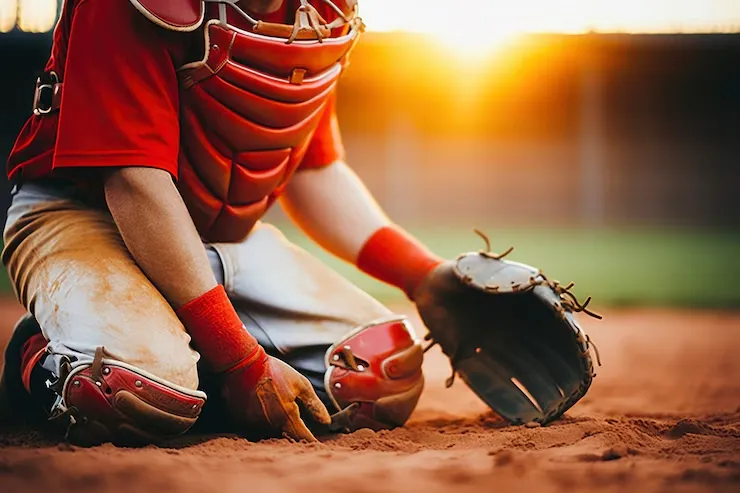
Baseball is more than a game — it’s a lifestyle that captures the essence of discipline, teamwork, tradition, and community. For players, fans, coaches, and even families, baseball weaves its way into daily life with the rhythm of a well-worn glove, the smell of fresh-cut grass, and the steady cadence of the season’s innings. Whether you’re stepping into cleats or sitting in the bleachers, understanding the baseball lifestyle means embracing its culture both on and off the diamond.
The Rhythm of the Game: A Season of Commitment

The baseball lifestyle begins with an unwavering commitment to the game’s slow, deliberate rhythm. Unlike sports with shorter seasons, baseball stretches across months — from spring training through summer into the fall. For players, that means daily practices, long road trips, and endless repetitions. Early mornings and late nights become routine, with batting cages and bullpen sessions filling the time in between.
But this rhythm isn’t just physical — it’s mental. Baseball teaches patience. A player can fail seven times out of ten and still be considered elite. That acceptance of failure — and the perseverance to keep swinging — shapes the mindset of anyone living the game. The lifestyle revolves around the idea that progress is earned, not given, and that success comes through quiet consistency, not explosive bursts.
Gear, Style, and the Baseball Aesthetic
Off the field, the baseball lifestyle has a distinct look and feel. From snapbacks and eye black to stirrups and broken-in leather gloves, baseball has a rich aesthetic that’s both classic and constantly evolving. Lifestyle brands like Baseballism, Easton, Rawlings, and even Nike have leaned into this culture, creating apparel and accessories that blend fashion with the love of the game.
Baseball gear isn’t just functional — it’s personal. A player’s glove is an extension of their identity, often shaped by years of use. Hats are worn not just for shade, but as a badge of pride, bearing team logos that represent cities, families, and friendships. Even the way players wear their pants — high socks or ankle-length — becomes part of a personality that transcends the scoreboard.
Nutrition and Training: Building a Baseball Body
While baseball isn’t always seen as a physically demanding sport compared to football or basketball, the baseball lifestyle demands a unique kind of athleticism. Baseball players train for endurance, explosive power, flexibility, and precision. A hitter’s swing or a pitcher’s delivery may look effortless, but both are the result of thousands of carefully controlled movements refined over years.
Off-season baseball training routines include strength conditioning, cardio, mobility work, and detailed nutritional plans. Protein-rich diets, hydration, and injury prevention strategies become everyday priorities. Mental health and recovery — including sleep, mindfulness, and even yoga — are now part of the regimen for players who understand that their performance depends on holistic well-being.
Family, Friends, and a Sense of Community
One of the most cherished aspects of the baseball lifestyle is its deep connection to community. From Little League fields to Major League stadiums, baseball is a sport that brings people together. Parents who coach their kids’ teams, siblings who shag fly balls during practice, friends who gather for backyard Wiffle ball games — these are the bonds that make baseball more than competition.
For many, the game becomes a family tradition. Grandparents pass down stories of historic baseball games, parents share gloves from their playing days, and kids grow up hearing the crack of the bat before they can walk. These generational connections make baseball a cornerstone of American culture and a common language across diverse backgrounds.
The Mental Game: Focus, Failure, and Growth
No discussion of baseball is complete without acknowledging its mental intensity. It’s often said that baseball is a game of failure — and that’s what makes it beautiful. Slumps are inevitable. Errors happen. Pitchers lose control. Batters strike out. But how players respond to these moments defines their success and shapes their character.
Learning to cope with adversity, stay focused under pressure, and build confidence after failure are essential lessons that extend far beyond the field. This mental toughness is what prepares young players for challenges in life — from school and work to relationships and personal growth. The baseball lifestyle teaches resilience in a way few other sports can.
Tradition, Superstition, and the Love of the Game
Baseball is steeped in tradition, and for those living the lifestyle, those traditions become sacred. Whether it’s wearing the same lucky socks, eating a certain pre-game meal, or tapping the plate before every at-bat, rituals are an important part of the game’s psychological landscape. Even the unwritten rules — like not talking about a no-hitter in progress — are passed down like folklore.
But above all, what drives the baseball lifestyle is love. Love for the game. Love for the challenge. Love for the sound of a ball hitting the mitt or the roar of the crowd after a walk-off hit. That emotional connection is what keeps players lacing up their cleats and fans filling the seats — through the heat of summer and the chill of fall, year after year.
Conclusion: A Life Shaped by the Game
To live the baseball lifestyle is to embrace a journey filled with highs and lows, sacrifice and joy, routine and spontaneity. It’s about showing up every day — whether to play, coach, watch, or support — and giving your heart to a sport that mirrors life in its unpredictability and its moments of quiet triumph. Baseball isn’t just a game played on fields across America — it’s a way of life for millions who find meaning in its simple beauty and enduring spirit.
FAQ: Baseball Lifestyle 101
What does it mean to live the baseball lifestyle?
Living the baseball lifestyle means adopting the habits, mindset, and culture that come with being deeply connected to the game — whether as a player, coach, fan, or family member. It involves physical training, mental discipline, a deep appreciation for tradition, and a sense of community centered around the sport.
Is baseball a physically demanding sport?
Yes, baseball demands a unique combination of strength, speed, flexibility, coordination, and endurance. While not always as physically intense as contact sports, it requires refined mechanics, repetitive training, and peak performance during critical moments. Off-field conditioning and nutrition are key components of the lifestyle.
What is the mental aspect of the baseball lifestyle?
Baseball is often called a “thinking man’s game” because of its strategic complexity and the mental resilience it requires. Players regularly deal with failure, pressure situations, and the need for focus and consistency. Mental training, visualization, and emotional regulation are integral parts of the baseball lifestyle.
What kind of gear and fashion is associated with baseball culture?
Baseball fashion includes snapback hats, team jerseys, batting gloves, cleats, and gear from brands like Rawlings, Baseballism, and Nike. Many players and fans embrace a casual but performance-inspired look, blending athletic wear with traditional baseball style like stirrups, flannels, and vintage caps.
How important is nutrition in the baseball lifestyle?
Nutrition is crucial. Players need energy, strength, and recovery support, so diets often include lean proteins, complex carbs, hydration, and supplements. Off-field meals and habits directly affect performance, making proper nutrition a core pillar of the lifestyle.
What role does community play in baseball?
Community is at the heart of baseball culture. From neighborhood Little League games to major league team fandoms, baseball brings people together. The lifestyle includes family traditions, friendships formed on the field, and local support systems that elevate the love for the game.
Why are rituals and superstitions common in baseball?
Baseball is filled with traditions and superstitions that players believe bring good luck or help maintain focus. Whether it’s wearing the same socks every game, touching the bat a certain way, or avoiding mention of a no-hitter, these habits are often part of a player’s routine and mental preparation.
About the Author
Ana Milojevic is a passionate sports writer and lifelong baseball enthusiast with a deep appreciation for the culture, discipline, and tradition that define the game. With a background in journalism and years spent covering youth leagues, collegiate teams, and professional baseball, Ana brings a unique perspective to the lifestyle behind the sport.
When she’s not writing about the game, she’s in the stands cheering or out on the field playing catch with her family. Ana believes that baseball isn’t just a sport — it’s a way of life, and she’s dedicated to sharing that spirit through every story she tells.
For more inspiring and intriguing stories, visit MyLiberla.com.






Leave a Reply